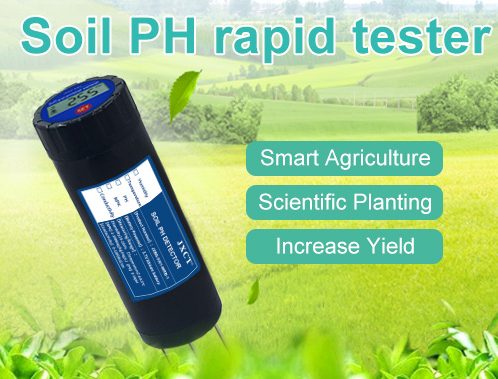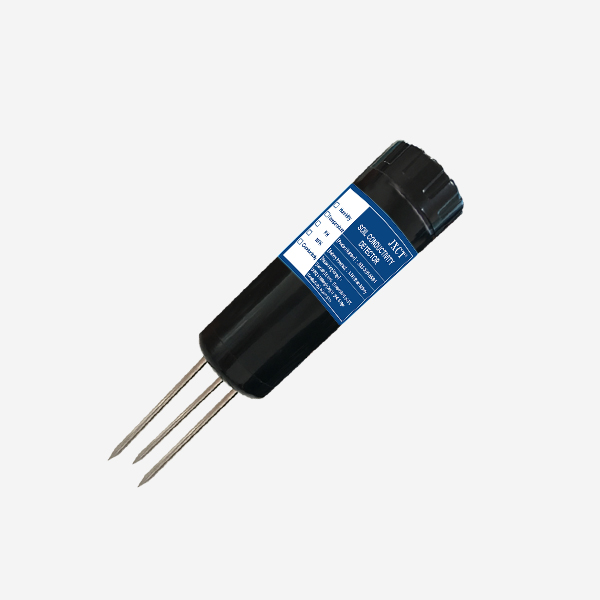soil pH sensor is electronic device that measures the acidity or alkalinity of soil. I am used in a variety of applications, including agriculture, environmental monitoring, and research.

Soil pH is an important factor in plant growth and development. It affects the availability of nutrients in the soil, as well as the activity of microorganisms and enzymes. The ideal soil pH for most plants is between 6.0 and 7.5. However, some plants can tolerate a wider range of pH levels.
I play an important role in sustainable agriculture by helping farmers to maintain optimal soil pH conditions for their crops. By using me, farmers can:
- Identify and correct soil pH imbalances.
- Optimize fertilizer application.
- Improve crop yields and quality.
- Reduce the risk of plant diseases.
- Protect the environment from pollution.
In addition to my role in agriculture, I am also used in environmental monitoring to:
- Track soil pollution.
- Detect environmental changes.
- Assess soil health.
I am a versatile tool that can be used to improve soil management practices and protect the environment.
How do Work
My working principle is based on the fact that the electrical conductivity of soil is affected by its pH. When I am inserted into the soil, a small electric current flows through me. The amount of current that flows is proportional to the acidity or alkalinity of the soil.
I am made up of three main components: a probe, a transmitter, and a receiver. The probe is the part of the sensor that is inserted into the soil. It is made of a conductive material, such as a metal or a semiconductor. The transmitter converts the electrical signal from the probe into a digital signal that can be transmitted to the receiver. The receiver displays the pH reading on a screen or sends it to a computer.
Benefits for Agriculture
I offer a number of benefits for agriculture, including:

- Improved crop yields: By helping farmers to maintain optimal soil pH conditions, I can help to improve crop yields. For example, a study by the University of California, Davis found that corn yields increased by an average of 10% when soil pH was managed using a soil pH sensor.
- Reduced fertilizer costs: I can help farmers to reduce their fertilizer costs by helping them to optimize fertilizer application. By ensuring that fertilizer is applied at the right time and in the right amount, I can help to reduce nutrient losses and improve fertilizer efficiency.
- Improved crop quality: I can help to improve crop quality by helping farmers to identify and correct soil pH imbalances. For example, a study by the University of Minnesota found that apples grown in soils with optimal pH levels were more uniform in size and color, and had fewer blemishes.
- Reduced risk of plant diseases: I can help to reduce the risk of plant diseases by helping farmers to maintain optimal soil pH conditions. For example, a study by the University of Wisconsin found that potatoes grown in soils with optimal pH levels were less susceptible to scab disease.
- Protection of the environment: I can help to protect the environment by helping farmers to reduce nutrient losses from their fields. For example, a study by the United States Department of Agriculture found that nitrogen losses from corn fields were reduced by an average of 20% when soil pH was managed using a soil pH sensor.
Benefits for Environmental Monitoring
I also offer a number of benefits for environmental monitoring, including:
- Tracking soil pollution: I can be used to track soil pollution by monitoring changes in soil pH. For example, a study by the University of Toronto found that soil pH levels decreased in areas that were contaminated with heavy metals.
- Detecting environmental changes: I can be used to detect environmental changes by monitoring changes in soil pH. For example, a study by the University of California, Berkeley found that soil pH levels decreased in areas that were affected by acid rain.
- Assessing soil health: I can be used to assess soil health by monitoring soil pH. For example, a study by the United States Environmental Protection Agency found that soils with optimal pH levels were more likely to have higher levels of organic matter and beneficial microorganisms.
My Future
As technology continues to advance, I am becoming more accurate, reliable, and affordable. This is making me more accessible to farmers and researchers, and is leading to new and innovative applications for me.
For example, I am now being used to develop smart irrigation systems that can automatically adjust the irrigation rate based on soil pH and other factors. This can help to improve water efficiency and reduce nutrient losses from agricultural fields.
I am also being used to develop new precision agriculture technologies. For example, I am being used to develop sensors that can be mounted on tractors and other agricultural equipment to create real-time maps of soil pH. This information can be used to guide farmers in making more informed decisions about fertilizer application and other agricultural practices.tunesharemore_vert
